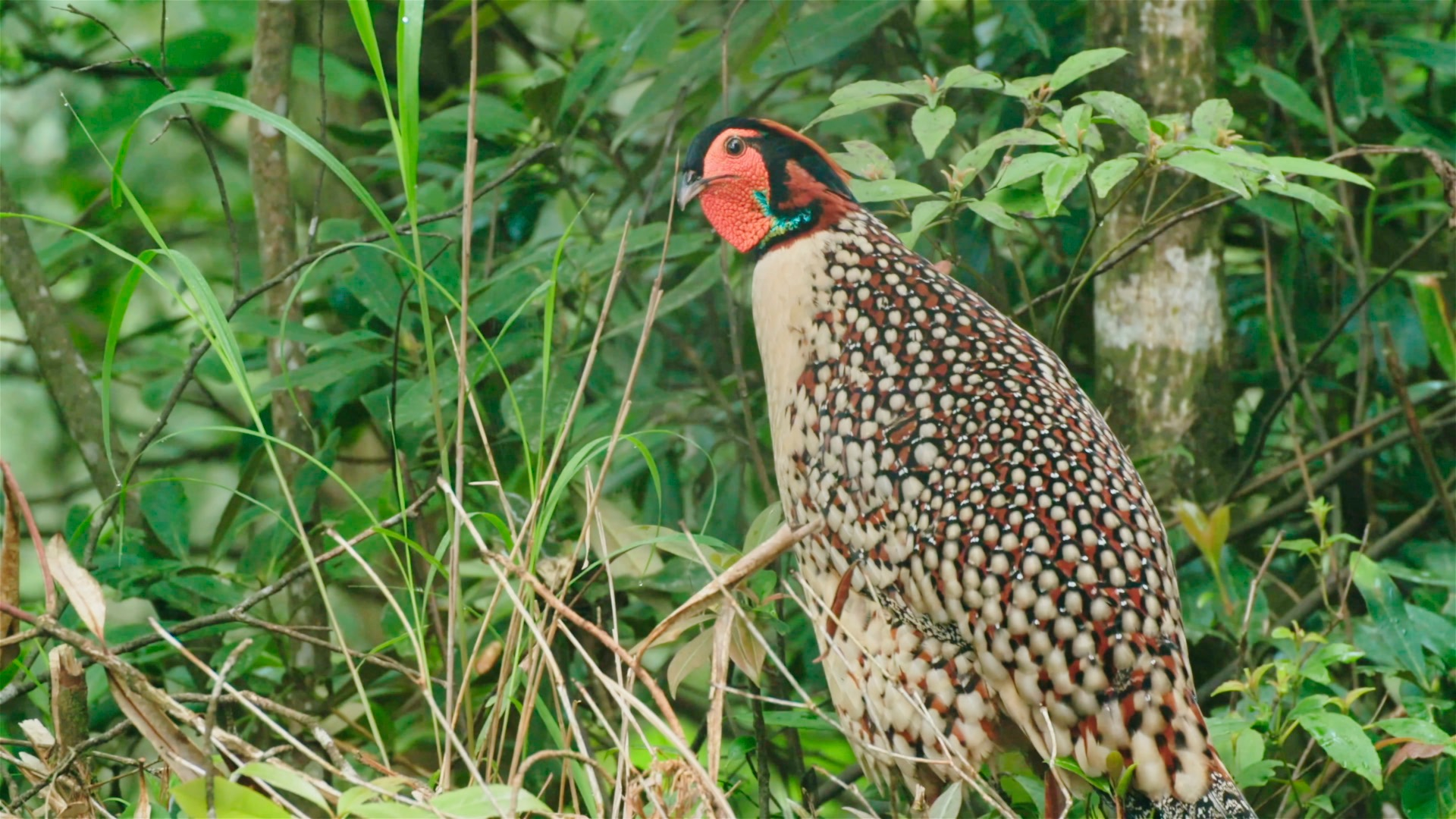CGTN Nature film crew spotted a weird pheasant in Wuyi Mountains, Fujian Province in east China. The bird has two "horns" on its head.
00:33

Cabot's tragopan seems to be an unfamiliar name for those who are not experts. In fact, "tragopan" is commonly called "horned pheasant" because males have two brightly colored, fleshy horns on their head that rise during courtship displays.
Two species of tragopans live in China. The Cabot's tragopan, also known as "yellow-bellied tragopan" or "Chinese tragopan" is endemic to several provinces in south and east China.
Another one, the Temminck's tragopan, or "red-bellied tragopan," has a larger population and wider range. One quick way to tell the two apart is their faces: male Cabot's tragopan has reddish-orange naked skin on the cheeks, while the male Temminck's tragopan has a hint of bright blue.
What is also curious about horned pheasants is that they have decorative, inflammable wattles dangling down their beaks. During the breeding season, when a male tries to attract a female, the wattle opens like a shiny "skirt." The males usually have an elaborate courtship ritual, and build a love nest together if the proposal succeeds.
About Rare Animals in China
How many rare animals in China can you list? The giant panda, red panda, snub-nosed monkey, snow leopard? We want to make sure you can name 100 or more.
China is home to rich biodiversity. This series will focus on the rare animals that inhabit China. Under national protection, they need us, and the first step of protection is to know who they are.
(Video clip credits to CGTN Nature film crew. Cover design by CGTN's Chen Yuyang)
(If you want to contribute and have specific expertise, please contact us at nature@cgtn.com.)